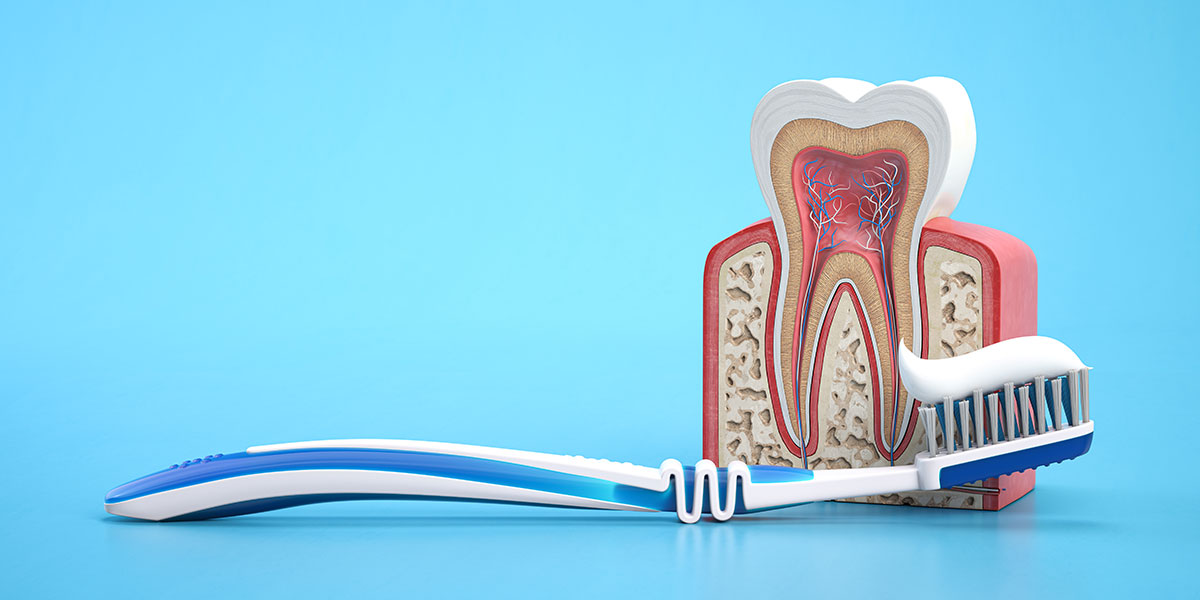
Finding out your child has cavities and needs treatment can be a little overwhelming. This is especially true in the case of very young children and those with dental anxiety or special healthcare needs.
Well, at Bitesize Pediatric Dentistry in DUMBO, Park Slope and Williamsburg, Brooklyn, we have a non-invasive option to treat tooth decay: silver diamine fluoride. The safe, highly effective, topical solution stops cavities in their tracks painlessly and affordably without the drill or needles.
To give parents a better idea of what silver diamine fluoride (SDF) is and how it works, we’ll be covering the ins and outs of the treatment.
Table of Contents
What is Silver Diamine Fluoride?
Silver diamine fluoride, or SDF, is a clear, liquid solution that’s applied to the teeth. It combines the antimicrobial properties of silver with the remineralizing effects of fluoride.
It was originally approved by the FDA to treat tooth sensitivity in adults. It does this by strengthening the dentin – the sensitive layer of tooth beneath the enamel – and partially closing the dentin’s microscopic tubules that, when exposed, cause hypersensitivity.
The more popular application though is using SDF for cavities. Traditionally, once tooth decay progressed into a cavity, the only option was to remove the decayed area of the tooth using a drill and restore it with a filling.
Silver diamine fluoride, on the other hand, is simply painted onto the cavity. It then kills the cavity-causing bacteria and simultaneously remineralizes the enamel, making it harder and more resistant to acids and decay. It’s non-invasive and doesn’t require removing any tooth structure. However, SDF does turn the affected areas of the tooth black or dark brown, which is why it’s usually used on primary teeth, or baby teeth.
While some parents opt to have their child’s tooth restored with a tooth-colored filling or bonding for aesthetic reasons, in the majority of cases, restorative treatment isn’t necessary after silver diamine fluoride application. Following SDF treatment, the tooth will be healthy and the pain will be gone.
Silver Diamine Fluoride vs. Fluoride
Varnish: What’s the Difference?
Unlike regular fluoride, silver diamine fluoride has the added benefit of silver, which is antibacterial. It actually contains less fluoride than a fluoride varnish. It’s the combination of the silver and fluoride that makes it so potent against cavities.
Another factor that sets SDF apart from other topical treatments like fluoride varnish or dental sealants is that while fluoride varnishes and sealants prevent future decay, SDF stops existing cavities immediately. It also prevents decay from spreading to the surrounding tooth surfaces and inhibits new decay from forming.
How is Silver Diamine Fluoride Applied?
Silver diamine fluoride application is simple and fast. Your Brooklyn pediatric dentist cleans the tooth, keeps the area dry and uses a tiny brush or special type of floss to apply the SDF directly onto the affected tooth surface.
After the solution dries, any excess is removed. The whole process only takes a few minutes. There is no need for anesthetic or a drill, so it’s well tolerated by patients of all ages.
Does Silver Diamine Fluoride Really Work?
Yes! SDF cavity treatment is super effective. A study published in Journal of Dental Research followed six-year-old children over a 36-month period and found that silver diamine fluoride significantly reduced cavities in the primary teeth and first permanent molars when applied every six months.
A systematic review of clinical trials on silver diamine fluoride in children determined that SDF arrested, or stopped, 81% of cavities. While most studies have been focused on children, research also shows a high level of success using SDF to stop or prevent cavities in exposed tooth roots in the elderly.
Is SDF Cavity Treatment Safe for Kids?
Studies show that silver diamine fluoride is safe for kids. A dental research team at the University of Washington received a breakthrough therapy designation from the FDA for the use of SDF on cavities in children and adults. Silver diamine fluoride is also supported by the American Dental Association and the American Academy of Pediatric Dentistry.
Though the treatment is newer to the United States, dentists have been successfully and safely using silver diamine fluoride in Japan since the 1960s. It’s also approved for cavity treatment in Australia, Canada and parts of Europe.
Does Silver Diamine Fluoride Cause Side Effects?
As with any treatment, there are pros and cons to silver diamine fluoride. But, overall, it has very few side effects. As we mentioned above, the main drawback is that SDF reacts with the decayed part of a tooth and darkens it.
It can also cause mild irritation and temporary staining of the gum tissue but with proper application, this is unlikely.
For many patients, the positives of a non-invasive cavity treatment that eliminates pain are far greater than the negative of darkening an already discolored area of the tooth.
Who Can Benefit from SDF Cavity Treatment?
Silver diamine fluoride is a great option for:
- Babies and toddlers. Though we’re trained in behavioral techniques to put kids at ease, and we use technology to make getting fillings comfortable, parents can feel unsure about having a baby or toddler undergo treatment. Very young children may require sedation if they can’t sit still to safely have cavities filled. SDF is a much faster and easier way to prevent further decay in little teeth until it’s time for them to fall out naturally.
- Kids that need extensive dental work. If your child has multiple cavities that need filling, SDF offers an alternative to a lengthy appointment or the need for anesthesia. Depending on the situation, we may use it as the sole treatment or as a way to eliminate pain and infection so restorative treatment can be spread out.
- Patients with certain health care or behavioral needs that make it difficult to get dental treatment. Silver diamine fluoride will treat cavities without the noise of a drill, needles or the need for sedation. It only takes a few minutes and won’t cause undue stress.
- When sedation isn’t safe. If your child isn’t a candidate for sedation and treating their decay would be burdensome without it, we can use SDF instead of restorative measures to stop cavities and pain.
- Older kids. It’s not always ideal to invest in restorative treatment for a baby tooth in a child who’s 10 or 11 since the last baby tooth will fall out by around age 12. Yet, a decayed primary tooth can be painful and impact the health of the surrounding permanent teeth. SDF will stop the discomfort and kill the harmful bacteria to keep the permanent teeth safe.
- When cost or access to care is a concern. Using silver diamine fluoride for kids’ cavities is one of the most affordable options. It can serve as a stopgap until restorative treatment is a possibility or as the treatment itself.
How Long Does Silver Diamine Fluoride Last?
Silver diamine fluoride starts working immediately and, while, occasionally, another application could be needed in a few weeks to ensure we got the entire cavity, many times, once is all it takes.
That said, the effectiveness of silver diamine fluoride wanes over time. Depending on your child’s case, overall oral health, risk of cavities and their needs, it’s recommended that SDF be applied routinely, generally once every six months.
How to Remove Silver Diamine Fluoride From Teeth
Parents sometimes ask us how to remove silver diamine fluoride from teeth. Unfortunately, the darkening of the decayed portion of a child’s tooth is permanent and there isn’t a way to remove silver diamine fluoride staining at home.
For this reason, most parents prefer that it’s used on baby teeth in the back of the mouth. If you’re worried about aesthetics, there are measures we can take to hide the staining. Or, for visible teeth in the front of your child’s mouth, you can choose restorative treatment instead.
Learn More About SDF Cavity Treatment in Brooklyn
If you’re interested in silver diamine fluoride for your child, schedule an appointment at Bitesize Pediatric Dentistry in DUMBO, Park Slope or Williamsburg, Brooklyn. An expert pediatric dentist will examine your child and walk you through the pros and cons of the different treatment options, so you can make a fully informed decision.







